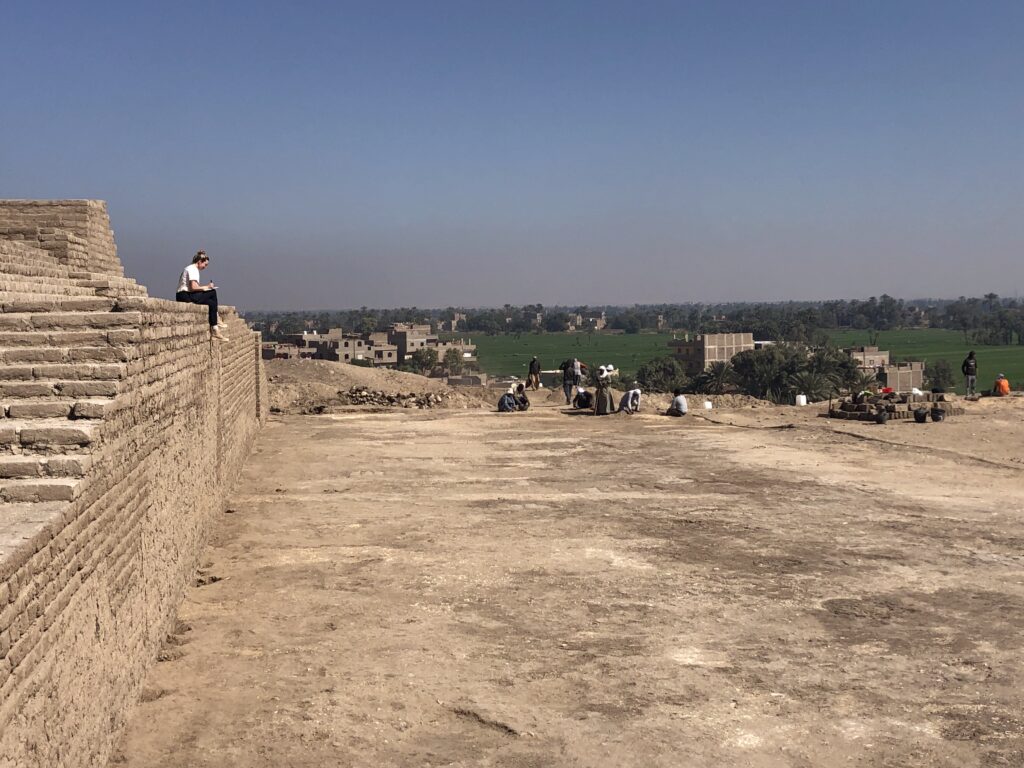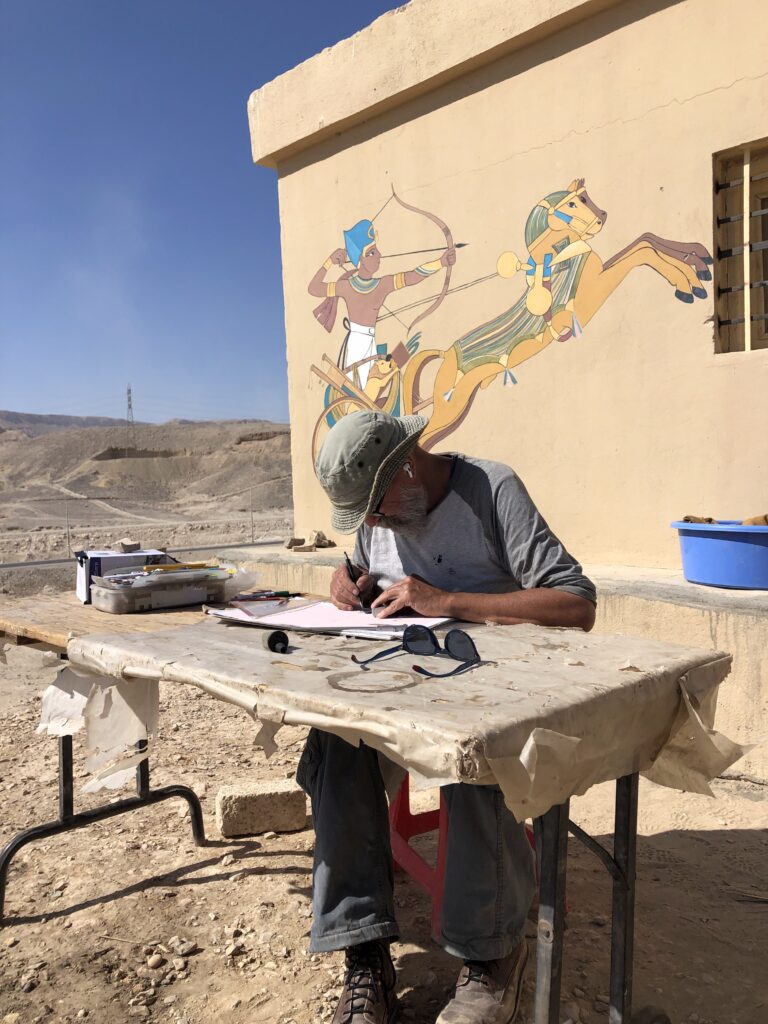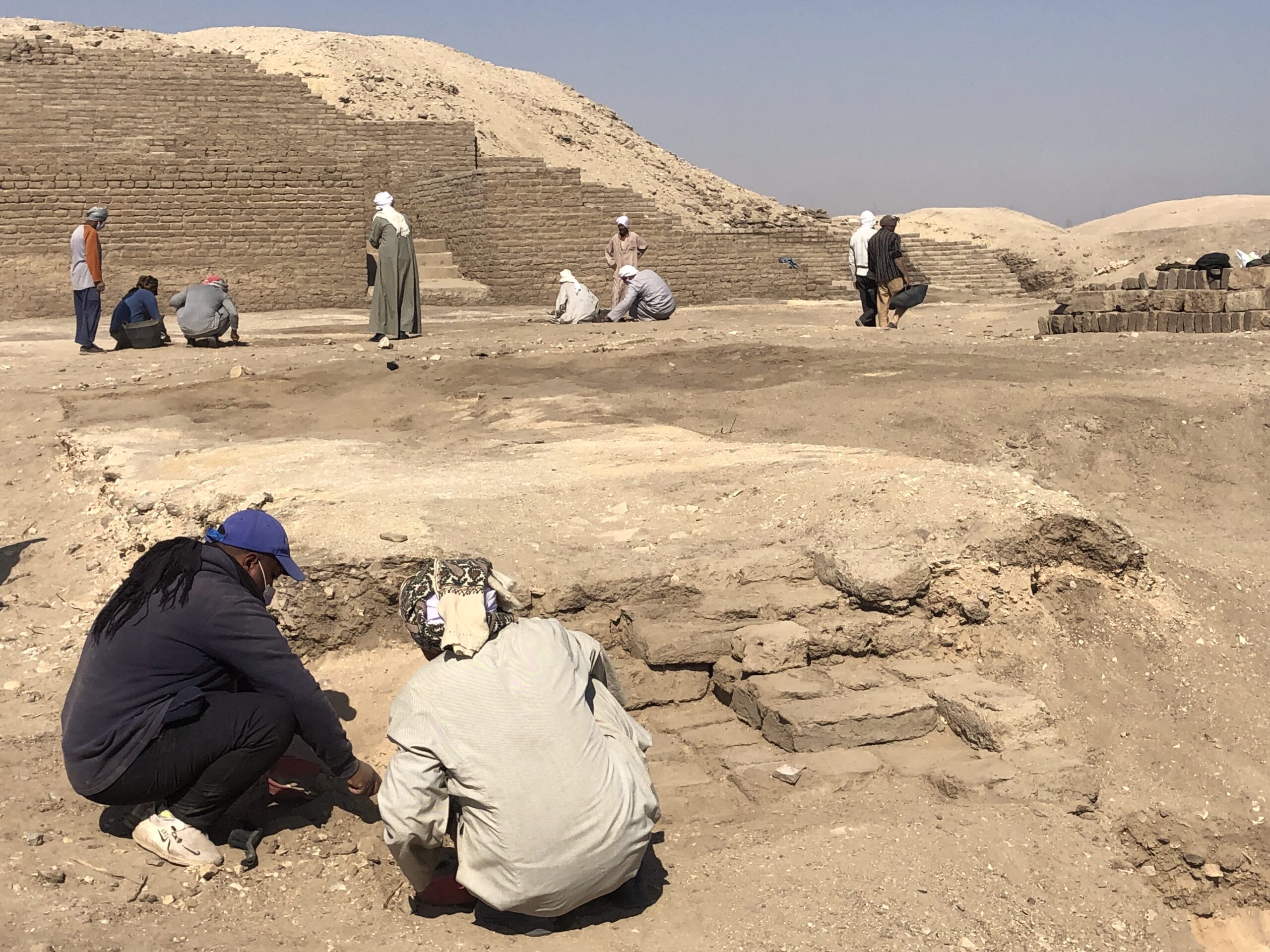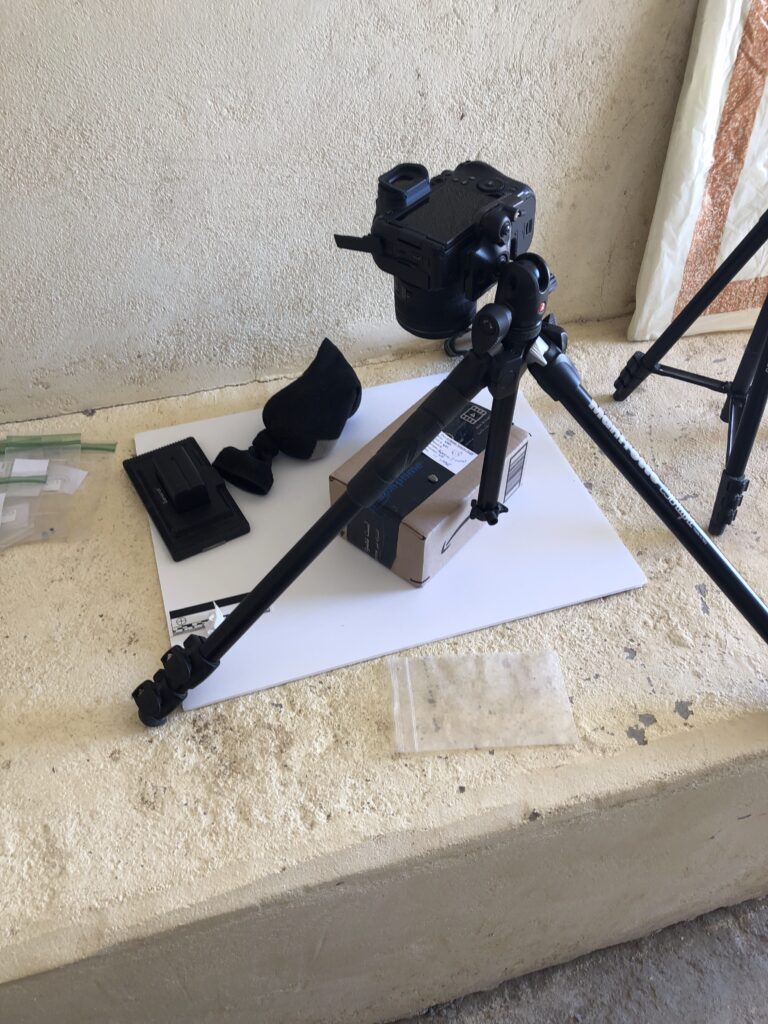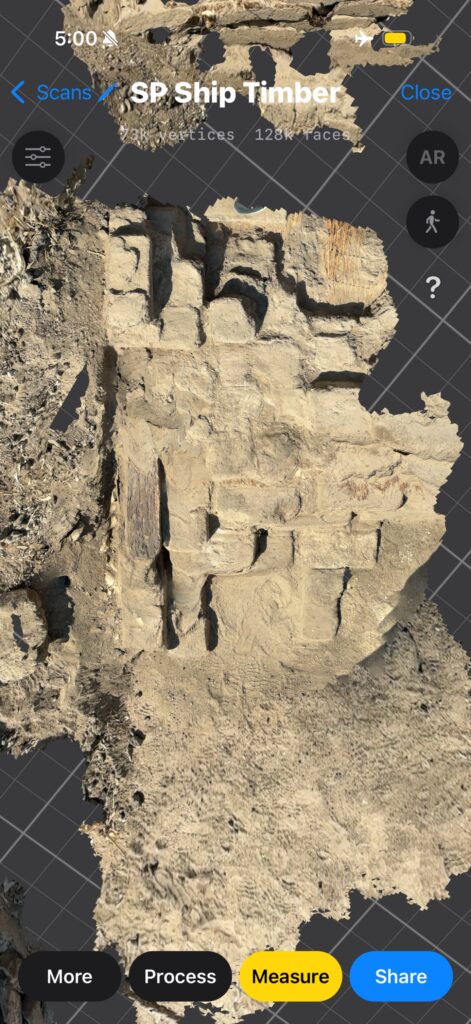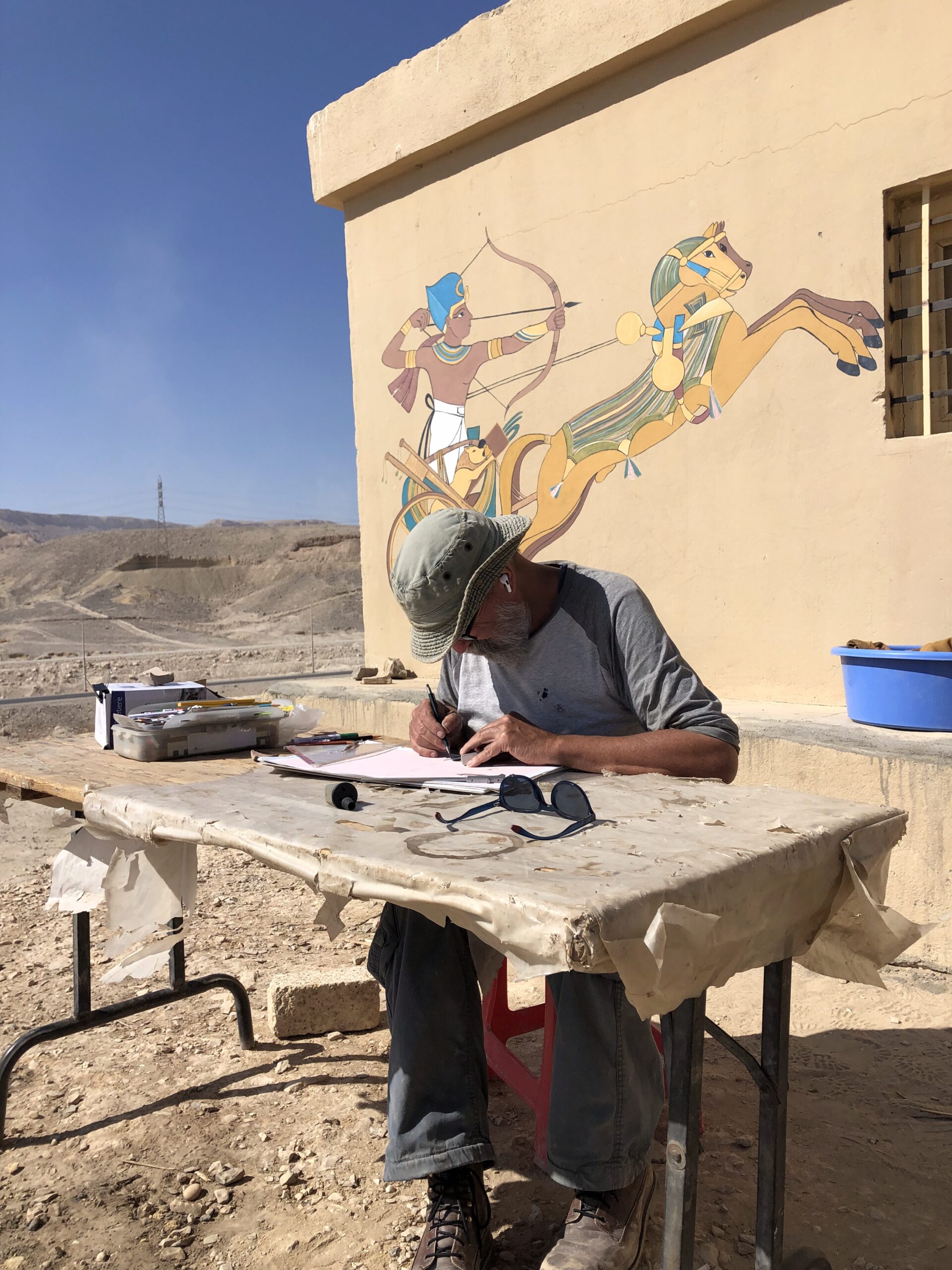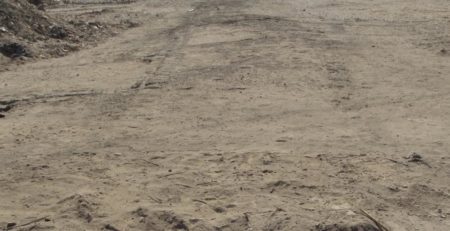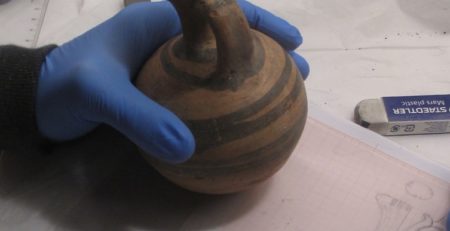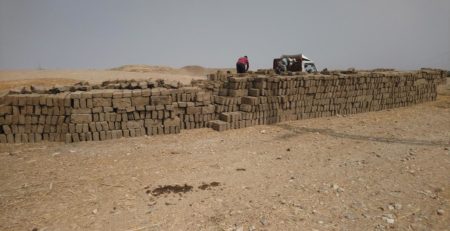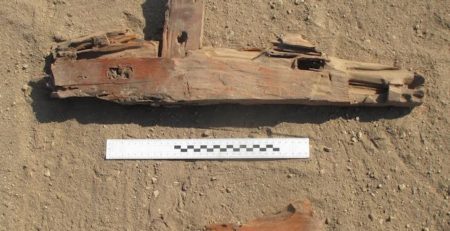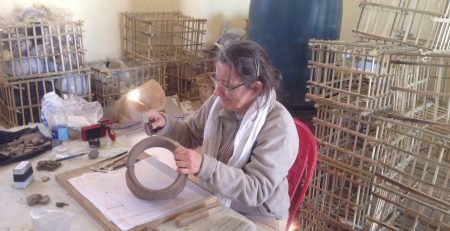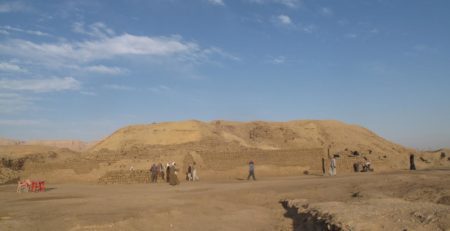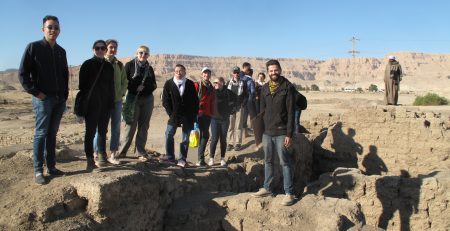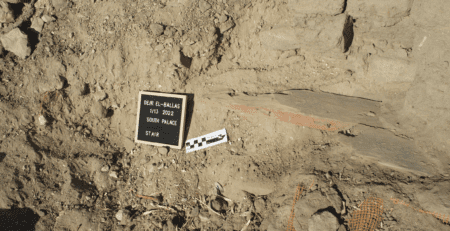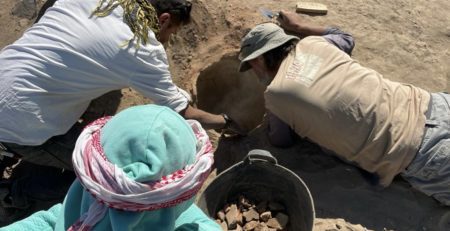Deir el-Ballas 2025, Week 4
This week on site was our last week of archaeological investigations for the 2025 Season.
Up in the north, Ahmed Abdelgawad continued his investigation of the North Palace and mud brick conservation efforts. Highlights of his work this week included discovering a possible rubble-filled doorway between some of the casemates as well as vaulting mud bricks. We are still investigating the possibilities and explanations for these features, but previous work on the site did not have the opportunity to find these architectural elements.
Ana Oliveira continued her excavation of House G. Her work revealed the northern extent of the structure this week – or what remains of it at least after the modern disturbance in the early 2000s. She has done a wonderful job of carefully recovering any remaining archaeological samples for future study and has found all of the preserved walls that are left, which we will document next week.
Victoria Shakespeare and her team worked at the South Palace to clean the mud plaster floor and remains of the Lower Terrace. Over the course of a week, they cleared ca. 725 square meters of surface debris. The team discovered many impressions of the column bases that once covered this area, as well as casemate foundations that were not previously mapped. The work also revealed the stratigraphy of the terrace and how exactly the ancient Egyptians manipulated the natural topography to build this unusual structure.
This week we were joined by Late Antique archaeologist Gillian Pyke, who is a specialist in the Roman to Medieval periods of Egyptian history. Her work with the later archaeological material from site is essential for our understanding of the prolonged use of Deir el-Ballas after its official abandonment in the mid-18th Dynasty.
At the on-site magazine, Piet Collet worked on documenting and recording our small finds. Additionally, he finished up survey work at the North Palace structure to continue working on our site map. Nicholas Brown worked on photographing the small finds from this season and last season in order to have a study record of all the materials found by the Expedition. Finally, the team spent time this week experimenting with 3D scanner apps (LiDAR) on their phones to record and document certain features of the excavated squares. We are still experimenting and assessing the accuracy of these models, but nonetheless we are having fun creating scans of our trenches as we do so!
